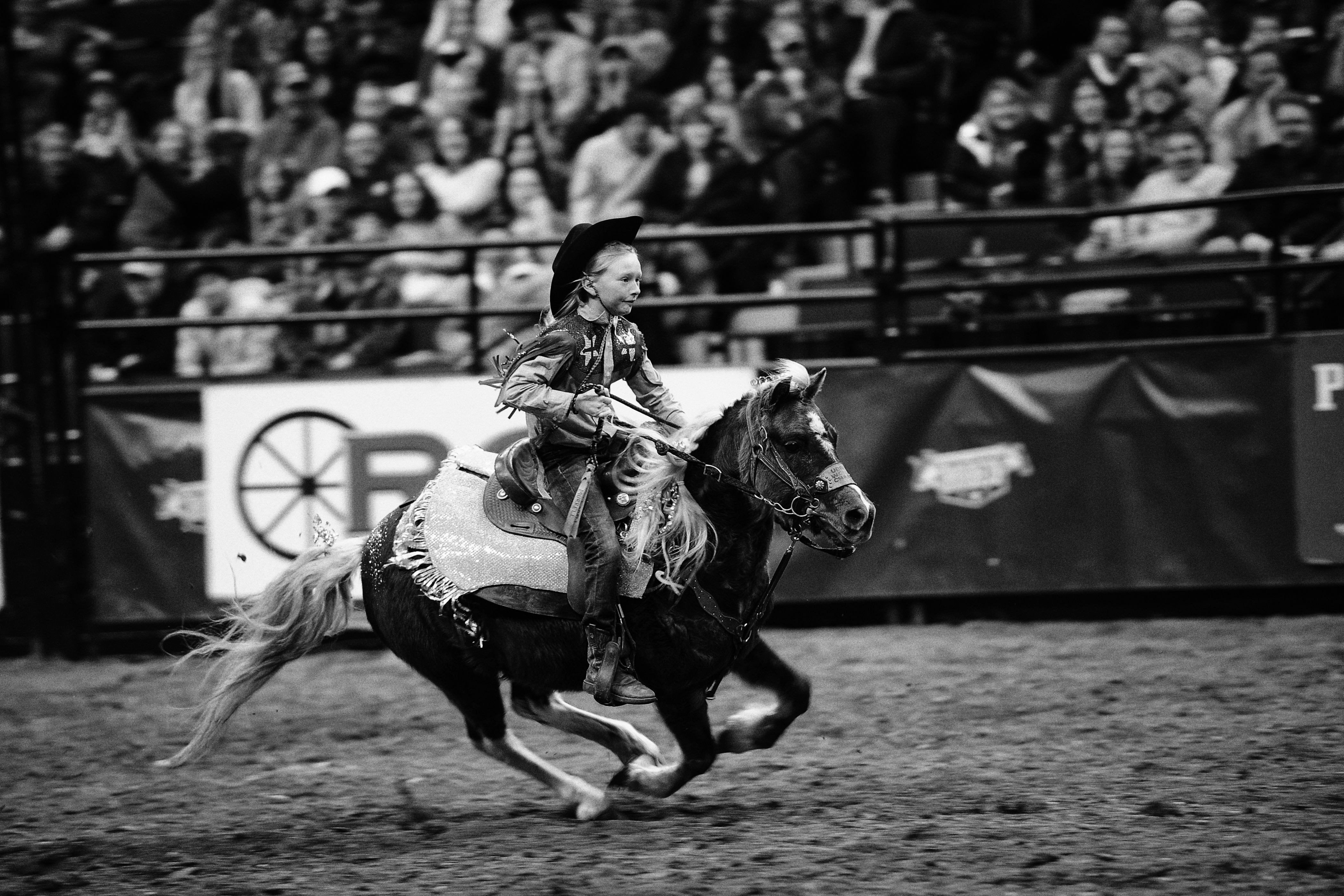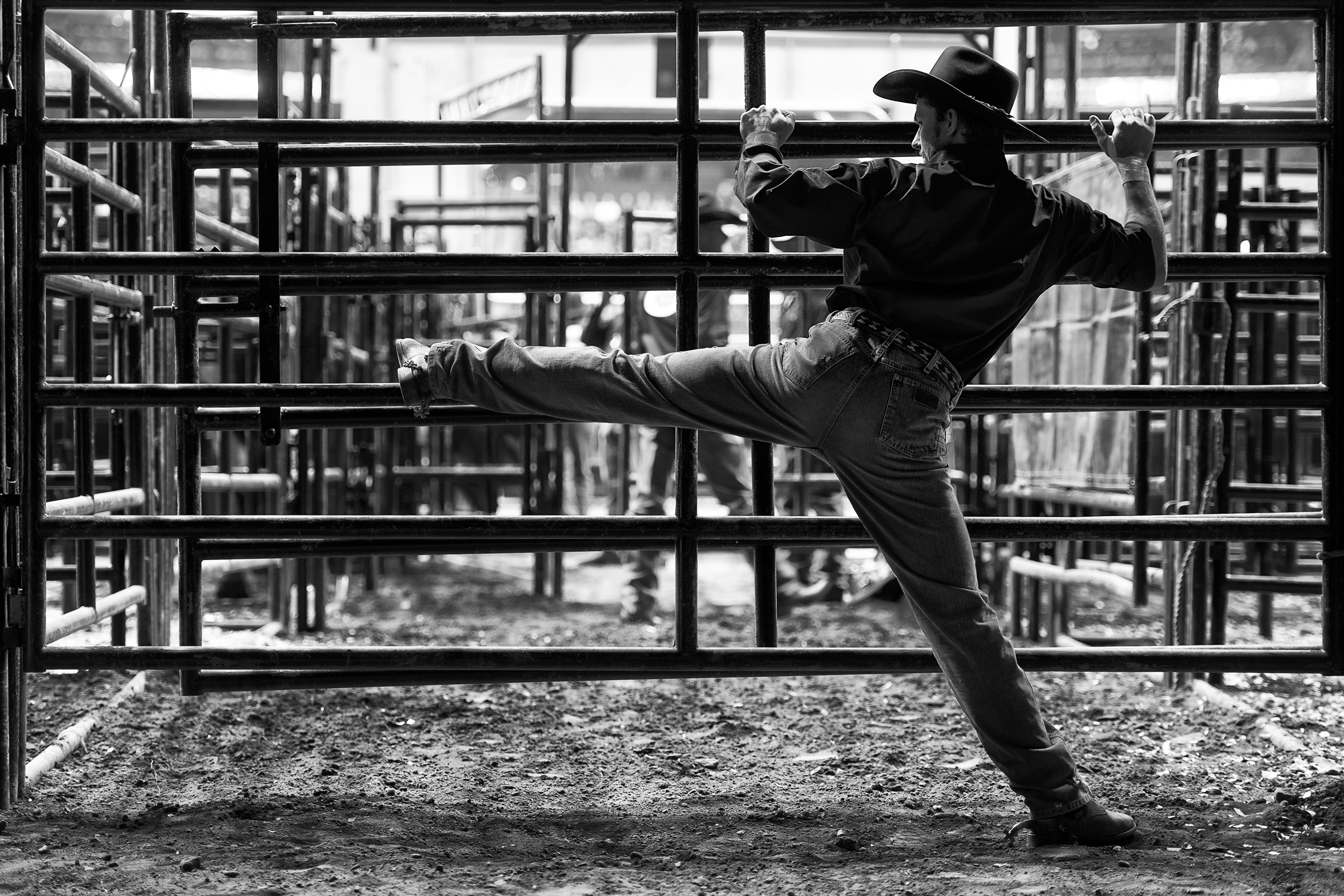I grew up outside the Twin Cities. I’ve ridden a horse fewer times than I can count on both hands and I don’t own a pair of chaps. But I love going to the rodeo, which probably puts me in the minority of urban dwellers.
Directly descended from ranching, (which is—or was—pretty much the economic lifeblood of the American West), rodeo is a distinctly American tradition. It started when cowboys began friendly competitions among themselves, testing skills they developed in their working lives: roping and riding, breaking horses, and rounding up livestock.
I won’t pretend to be an expert on the matter, but I grew up visiting the American West often and lived two summers in a Montana town that’s a stop on the pro rodeo circuit.
Last weekend’s World’s Toughest Rodeo at the Xcel Energy Center in St. Paul was full of bells and whistles: flames and arena speakers and a merchandise table. But big or small, a rodeo is a rodeo. And rodeo fan or not, it’s an experience worth having.
“It’s preserving our Western heritage. People don’t get to see this, just buckin’ horses and stuff like they used to do in the old days,” said Justin Rumford, the rodeo clown for the show at the Xcel. Rumford holds a business degree, grew up around rodeo culture and spends ten months a year traveling to shows as a rodeo clown.
What’s especially likable about World’s Toughest Rodeo is that it brought rodeo to downtown St. Paul, to people perhaps unfamiliar with the sport.
“These people don’t see a lot of rodeos, so when they come, they’re excited—they’re loud, they’re into it,” said Chanhassen’s Jeff Rector, whose job as a pick-up man is to help cowboys get off bucking animals and get the livestock out of the ring. “If you go, let’s say, to a small town or a place that has a lot of rodeos, they’re more just into it as far as watching and being kind of quiet.”
The first order of official business at every rodeo is the “Star Spangled Banner.” When it begins, men doff their cowboy hats. If you have any heart at all, you’ll feel a twinge of good old American pride, similar to what you feel when you hear “Sweet Home Alabama” for the first time in awhile. This is nothing to be ashamed of. This is your heritage.
After that, things get underway.
The World’s Toughest Rodeo had four events one is likely to see at a rodeo: saddle bronc, bareback riding, bull riding and barrel racing. This is a general guide to what they look like.
Saddle bronc evolved from ranchers’ need to break horses for work, which in horse parlance means training them to be ridden. Basically, cowboys are required to stay atop a saddled, bucking horse for eight seconds. According to Professional Rodeo Cowboys Association rules, the cowboy can only use one hand, must spur the horse and he’s judged on both his style and the animal’s: a good saddle bronc ride is relatively smooth (emphasis on relatively), and a cowboy gets more points for making a fluid ride of a crazy horse.
What you’ll see is a guy clinging to a rope, tied to a horse that’s alternately bucking up its front feet, then back feet—sometimes so high its got both sets of hooves off the ground, until the cowboy either falls off or the pick-up man pulls him off.
Watching bareback riding is like watching a guy spend eight seconds lying on a horse that’s trying to kill him. Broadly, it’s like saddle bronc, but different challenges and techniques come with having no saddle. All the cowboy has is a leather apparatus with a suitcase-type handle on it. Riding style matters, and he can only use one hand. And though the ride is anything but easy, Rumford claims they like it.
“Horses were made to buck and be wild. They weren’t made to be gentle,” he said. “An average bucking horse works about two minutes a year. And they love it.”
Then there’s bull riding, what may be the scariest event of all. See, those massive, solid, muscled bulls weigh about two tons and don’t take kindly to having people on their backs. Think mechanical bull but with a brain.
Again, according to PRCA rules, it’s one hand only, and it’s eight seconds before the pick-up man comes to the cowboy’s rescue, if he hasn’t already fallen off.
After all that bucking animal business, barrel racing is fun to watch because it shows how well people and horses can work together. In this timed event, cowboys (and cowgirls) lead their horses around three barrels positioned in a cloverleaf, trying to finish the pattern as fast as they can.
And boy, can those horses run.
That’s all, folks, though it’s hardly the end of the night.
“Usually when the rodeo’s over, we get everything put up and get the horses fed, we go and find the closest watering hole,” Rector said. “It’s definitely a culture of having a good time.”
It’s not just that. Rodeo is a way of life. It’s how many people make a living, and it’s related to how that grass-fed steak got from the ranch to your plate.
“[People] just think meat comes from the grocery store and vegetables come from the market,” said Anthony Lucia, rodeo announcer and trick roper. “The more concrete that comes into this world, the more we’re going to need dirt. It’s part of our heritage.”

